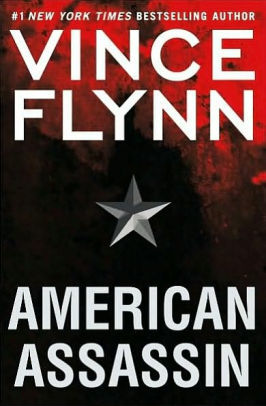
American Assassin
Chapter 11
by Flynn, VinceThe provided excerpt from Chapter 11 of *American Assassin* by Vince Flynn primarily consists of promotional material, acknowledgments, and copyright information rather than narrative content. The chapter title and opening lines suggest a pivotal moment for Mitch Rapp, the protagonist, as he reflects on his actions in Beirut, Lebanon. However, the bulk of the text focuses on praising Flynn’s work, highlighting the series’ popularity and critical acclaim, with endorsements from notable figures like Glenn Beck and Rush Limbaugh.
The promotional section emphasizes the novel’s relevance to post‑9/11 counterterrorism themes, describing Rapp as a formidable CIA operative comparable to Jason Bourne. Reviews laud the book’s fast-paced, high-stakes narrative and its exploration of political and security challenges. Flynn’s ability to craft gripping, timely thrillers is repeatedly highlighted, with critics praising his understanding of geopolitical tensions and the psychological depth of his characters.
Acknowledgments reveal Flynn’s gratitude toward his wife, Lysa, for her support during the writing process, as well as his appreciation for his publishing team, including editors and agents. He also credits military and intelligence contacts for their insights, underscoring the research behind his novels. The dedication to victims of the Pan Am Lockerbie attack hints at the novel’s thematic connection to real-world terrorism.
The excerpt concludes with a teaser of the chapter’s opening scene, where Rapp questions his sanity while staring into a mirror in Beirut. This brief glimpse sets a tense, introspective tone, suggesting a deeper exploration of Rapp’s origins and motivations. Despite the lack of substantial narrative content in this excerpt, the promotional and acknowledgments sections reinforce the series’ reputation as a cornerstone of modern political thrillers.
FAQs
1. What is the central premise of Vince Flynn’s “American Assassin” based on the provided chapter content?
Answer:
“American Assassin” is the origin story of Mitch Rapp, a CIA operative being groomed as America’s ultimate weapon in the war on terror. The novel explores how Rapp transforms into a lethal asset, set against the backdrop of post-9⁄11 counterterrorism efforts. The chapter establishes Rapp’s early days in Beirut, hinting at his psychological complexity and the morally ambiguous world of intelligence operations. The promotional text positions Rapp as a “Rambo for the war on terror,” combining brutal efficiency with deep patriotism to combat threats that conventional forces cannot address.2. How does the chapter establish Vince Flynn’s credibility as a thriller writer?
Answer:
The chapter builds Flynn’s credibility through multiple elements: 1) A compilation of glowing reviews from major publications praising his authentic grasp of counterterrorism (“demonstrates he truly understands the psyche of the enemy”); 2) References to his technical accuracy (“Flynn has done his homework on military matters” - Washington Post); 3) Comparisons to iconic characters like Jason Bourne; and 4) Testimonials from political figures (Bill O’Reilly, Karl Rove). These elements position Flynn as both an entertainer and a commentator who merges pulse-pounding action with geopolitical relevance.3. What thematic tension is suggested by Rapp’s opening scene in Beirut?
Answer:
The Beirut prelude introduces core tensions through Rapp’s mirror reflection moment. This visual metaphor suggests: 1) The duality of his identity (ordinary man vs. weaponized asset); 2) Moral ambiguity (“questioned his sanity”) about sanctioned violence; and 3) The psychological cost of counterterrorism work. The Middle Eastern setting further contrasts American ideals with the gritty realities of asymmetrical warfare. These elements foreshadow the novel’s exploration of whether Rapp’s extreme methods ultimately protect or corrupt American values.4. How does the chapter frame Mitch Rapp’s cultural significance?
Answer:
The text positions Rapp as: 1) A post-9⁄11 archetype (“the voice of today’s postmodern thriller generation”); 2) A cathartic fantasy figure (“watching Rapp knock off bad guys nobody seems able to get in fact”); and 3) A political Rorschach test - praised by both conservative commentators (Limbaugh, Beck) and mainstream critics. The dedication to Pan Am Lockerbie victims further roots him in real-world trauma, making Rapp both a fictional character and symbolic response to national vulnerability. This duality explains his broad appeal across ideological lines.5. What narrative purpose does the Beirut setting serve?
Answer:
Beirut operates on multiple levels: 1) Historical context (1980s Beirut was ground zero for anti-American terrorism); 2) Training ground for Rapp’s transformation from recruit to operative; and 3) Symbolic value - the “cracked mirror” reflects both Rapp’s fractured psyche and the shattered illusions about clean victories in counterterrorism. The dusty, war-torn environment physically manifests the moral gray zones Rapp must navigate, establishing the novel’s central tension between effective action and ethical compromise.
Quotes
1. “Behind the steely gaze of the nation’s ultimate hero is a young man primed to become an AMERICAN ASSASSIN”
This quote encapsulates the core premise of the novel - the origin story of Mitch Rapp’s transformation into a lethal CIA operative. It highlights the duality of his character as both a relatable young man and a formidable weapon.
2. “Rapp is still the best CIA-trained human weapon this side of Jason Bourne.”
This comparison from the Contra Costa Times emphasizes Rapp’s elite status among fictional operatives, positioning him as a quintessential action hero in the post-9⁄11 thriller genre.
3. “Simply stated, there’s nothing better than watching Mitch Rapp in fiction knock off the bad guys nobody seems able to get in fact.”
This quote from The Providence Journal captures the wish-fulfillment aspect of Flynn’s novels, where Rapp succeeds where real-world counterterrorism efforts often fail, making the series particularly cathartic for readers.
4. “A Rambo perfectly suited for the war on terror.”
The Washington Times’ description succinctly positions Rapp as a contemporary action hero archetype, updated for modern geopolitical conflicts and counterterrorism operations.
5. “Every American should read this book.”
Bill O’Reilly’s endorsement reflects the novel’s appeal to readers interested in national security themes, suggesting it offers important insights about America’s war on terror.
